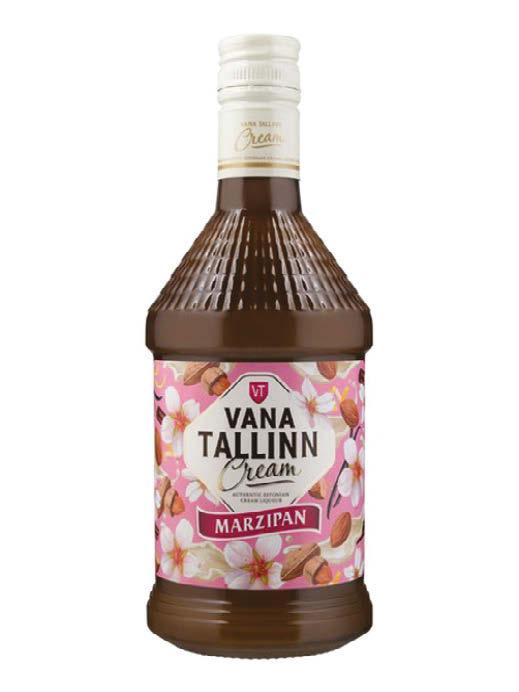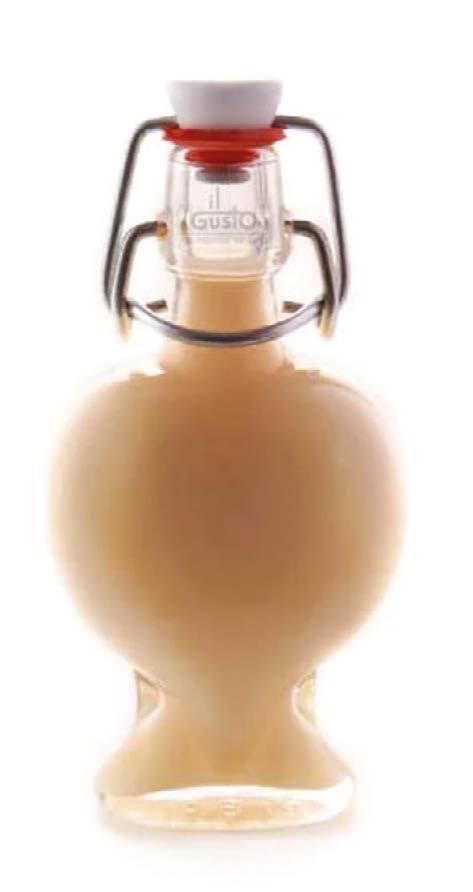
9 minute read
WINE & DINE
The Story of the Christmas Tablecloth
THE BRAND-NEW pastor and his wife, newly assigned to their first ministry, to re-open a church in suburban Brooklyn, arrived in early October excited about their opportunities. When they saw their church, it was very run down and needed much work. They set a goal to have everything done in time to have their first service on Christmas Eve.
Advertisement
They worked hard, repairing pews, plastering walls, painting, etc, and on December 18 were ahead of schedule and just about finished.
On December 19 a terrible tempest - a driving rainstorm hit the area and lasted for two days.
On the 21st, the pastor went over to the church. His heart sank when he saw that the roof had leaked, causing a large area of plaster about 20 feet by 8 feet to fall off the front wall of the sanctuary just behind the pulpit, beginning about head high.
The pastor cleaned up the mess on the floor, and not knowing what else to do but postpone the Christmas Eve service, headed home. On the way he noticed that a local business was having a flea market type sale for charity, so he stopped in. One of the items was a beautiful, handmade, ivory coloured, crocheted tablecloth with exquisite work, fine colours and a Cross embroidered right in the center. It was just the right size to cover the hole in the front wall. He bought it and headed back to the church.
By this time it had started to snow. An older woman running from the opposite direction was trying to catch the bus. She missed it. The pastor invited her to wait in the warm church for the next bus 45 minutes later.
She sat in a pew and paid no attention to the pastor while he got a ladder, hangers, etc., to put up the tablecloth as a wall tapestry. The pastor could hardly believe how beautiful it looked and it covered up the entire problem area.
Then he noticed the woman walking down the centre aisle. Her face was like a sheet. “Pastor,” she asked, “where did you get that tablecloth?” The pastor explained. The woman asked him to check the lower right corner to see if the initials, EBG were crocheted into it there. They were. These were the initials of the woman, and she had made this tablecloth 35 years before, in Austria.
The woman could hardly believe it as the pastor told how he had just bought ‘The Tablecloth’. The woman explained that before the war she and her husband were well-to-do people in Austria.
When the Nazis came, she was forced to leave. Her husband was going to follow her the next week. He was captured, sent to prison and she never saw her husband or her home again.
The pastor wanted to give her the tablecloth; but she made the pastor keep it for the church. The pastor insisted on driving her home. That was the least he could do. She lived on the other side of Staten Island and was only in Brooklyn for the day for a housecleaning job.
What a wonderful service they had on Christmas Eve. The church was almost full. The music and the spirit were great. At the end of the service, the pastor and his wife greeted everyone at the door and many said that they would return.
One older man, whom the pastor recognized from the neighborhood continued to sit in one of the pews and stare, and the pastor wondered why he wasn't leaving.
The man asked him where he got the tablecloth on the front wall because it was identical to one that his wife had made years ago when they lived in Austria before the war and how could there be two tablecloths so much alike?
He told the pastor how the Nazis came, how he forced his wife to flee for her safety and he was supposed to follow her, but he was arrested and put in a prison. He never saw his wife or his home again all the 35 years between.
The pastor asked him if he would allow him to take him for a little ride. They drove to Staten Island and to the same house where the pastor had taken the woman three days earlier.
He helped the man climb the three flights of stairs to the woman's apartment, knocked on the door and he saw the greatest Christmas reunion he could ever imagine.
This is a true Story - submitted by Pastor Rob Reid who says God does work in mysterious ways. I asked the Lord to bless you as I prayed for you today, to guide you and protect you as you go along your way.
So when the road you're travelling seems difficult at best, just remember I'm here praying for you, and God will do the rest. Pass this on to those you want God to bless.
When there is nothing left but God, that is when you find out that God is all you need.
Simply say the following small prayer and send it on. You will have caused a multitude of people to pray for other people. Then, sit back and watch the power of God work in your life.
Father, bless all my friends and family in what ever it is that You know they may be needing this day. May their lives be full of Your peace, prosperity and power. Amen.
Marzipan
It’s nearly Christmas, and we’ve been thinking about (or consuming) mince pies, puddings and of course Christmas cakes, Marzipan comes into its own.
This sweet treat, made from almonds and sugar, is enjoyed by many. However, few of us think much beyond eating it, to consider where it comes from, what it is made of, and why we eat it.
This all changed for me when this summer, whilst teaching in Germany, I had occasion to visit Lübeck, generally acknowledged to be the marzipan capital of the world. Time for a little research. Despite not being a marzipan lover myself, although I do like almonds, I was soon to learn of marzipan’s worldwide popularity, and not just during festive holiday occasions or celebrations.
I am however a great fan of The Nutcracker, having seen it almost every year at Christmas time since the mid-1980s, and I was thrilled to discover that Marzipan is even the name of a character in the ballet, with its own dance.
The origins of marzipan are open to question, with some sources citing China, and its migration to the Middle East and beyond being largely through trade routes.
Over the centuries, the original English name ‘marchpane’, which occurs in Shakespeare's Romeo and Juliet, Act 1, Scene 5, Line 9 (‘Away with the joint-stools, remove the court-cupboard, look to the plate. Good thou, save me a piece of marchpane’), has largely been ousted by the German name we now use.
Marzipan comes from nuts and is traditionally made with ground almonds. I soon learnt though that there is much to be desired in the quality of the marzipan we find in our local supermarkets. In order to control and maintain quality standards many countries do actually regulate the percentage of almonds a recipe must have for it to be legally called "marzipan".
This discourages the use of apricot kernels, which are sometimes used as a cheap substitute for almonds. See below for comparisons I found.
The first written reference to marzipan dates to back to Toledo in 1512, although Lübeck is credited with its invention when, during a 15th century famine, flour for making bread became scarce, and the senate of Lübeck ordered bakers to create a replacement.
Using eggs, sugar, and stores of almonds, the bakers came up with marzipan. This is not without controversy, as cities such as Venice and Florence also lay claim to its invention.
What is not in dispute though, is that, since its invention, marzipan has clearly been embraced by many different cultures and forms the basis for many traditions. For example, in Germany, and throughout much of northern Europe, it is considered good luck to receive a marzipan pig on Christmas or New Year's Day.
The Spanish and Portuguese are big consumers of marzipan too and marzipan is a traditional food eaten at weddings and on religious feast days in Italy, Greece, and Cyprus.
Variations on the theme are also found in Latin America, where a popular marzipan-like treat, which replaces the almonds with peanuts, is called "mazapan", and in Mexico, pine nuts and pistachios are substituted for almonds. In the Middle East it is usually flavoured with orange-flower water.
Marzipan consists primarily of sugar, honey, and ground almonds, which is sometimes augmented with almond oil or extract.
It is often moulded into festive shapes, such as imitation fruits (Frutta martorana, popular in Palermo, Italy) and vegetables, or coated with chocolate. In the UK, we tend to use it rolled into thin sheets and glazed for icing birthday cakes, wedding cakes and Christmas cakes, and to top off a Simnel cake at Easter, not forgetting the layer of marzipan covering Battenberg cake, which originated in England.
Marzipan paste may also be used as a baking ingredient, as in stollen, a popular fruit laden yeast bread that originated in Dresden, Germany. Elsewhere it can be found shaped into small figures of animals as a traditional treat for New Year's Day or Christmas.
Marzipan is also used in Tortell, an O-shaped pastry that is popularly eaten on Twelfth Night in Catalan, where it is commonly stuffed with both a figurine of one of the Three Wise Men, and a bean.
The person that gets the figurine in their portion gets to wear a paper crown and be royalty for the day. On the other hand, the person that gets the bean gets to pay for the pastry or tidy up after the meal.
I was particularly taken with discovering the Swedish Princess cake, a celebration cake typically covered with a layer of marzipan that has been tinted pale green or pink; perfect for any princess’s birthday!
The more I delved into the origins and traditions of marzipan the more I uncovered, far too many to mention here but I was especially interested to read about a Geneva tradition carried out as part of the celebration of L'Escalade, held on or around 11th December. This involves the ritual smashing of a chocolate cauldron filled with marzipan vegetables, a reference to a Savoyard siege of the city which was supposedly foiled by a housewife with a cauldron of boiling soup.
The key learning point for me during my marzipan discovery journey was that all marzipans are not the same, and yes, you usually get what you pay for. Here are those I have found, but I am reliably informed that to be considered half decent marzipan should contain at least 50% almonds.
It seems that most marzipans that are readily available to us have just 25% almond content so, although the cost may be far less, you are basically just paying for sugar.
Having visited Neideregger, the home of marzipan, in person I can confirm that the quality is worth every penny, and that, although not easy to get to, as a destination Lübeck is an amazing place to visit.
For those who really do want to indulge, there are several marzipan liqueurs available on the market, none of which I have tried because I hate the taste of the stuff!

• Il Gusto Spirits Ltd –Marzipan Liqueur - 16%abv - 40ml. £9.90
• Vana Tallin Liqueuerr with marzipan – 16%abv. – 50ml. - £16.90 • Niederegger - Marzipan Sahneliqueur - 15%abv. –35ml. - £14.58











